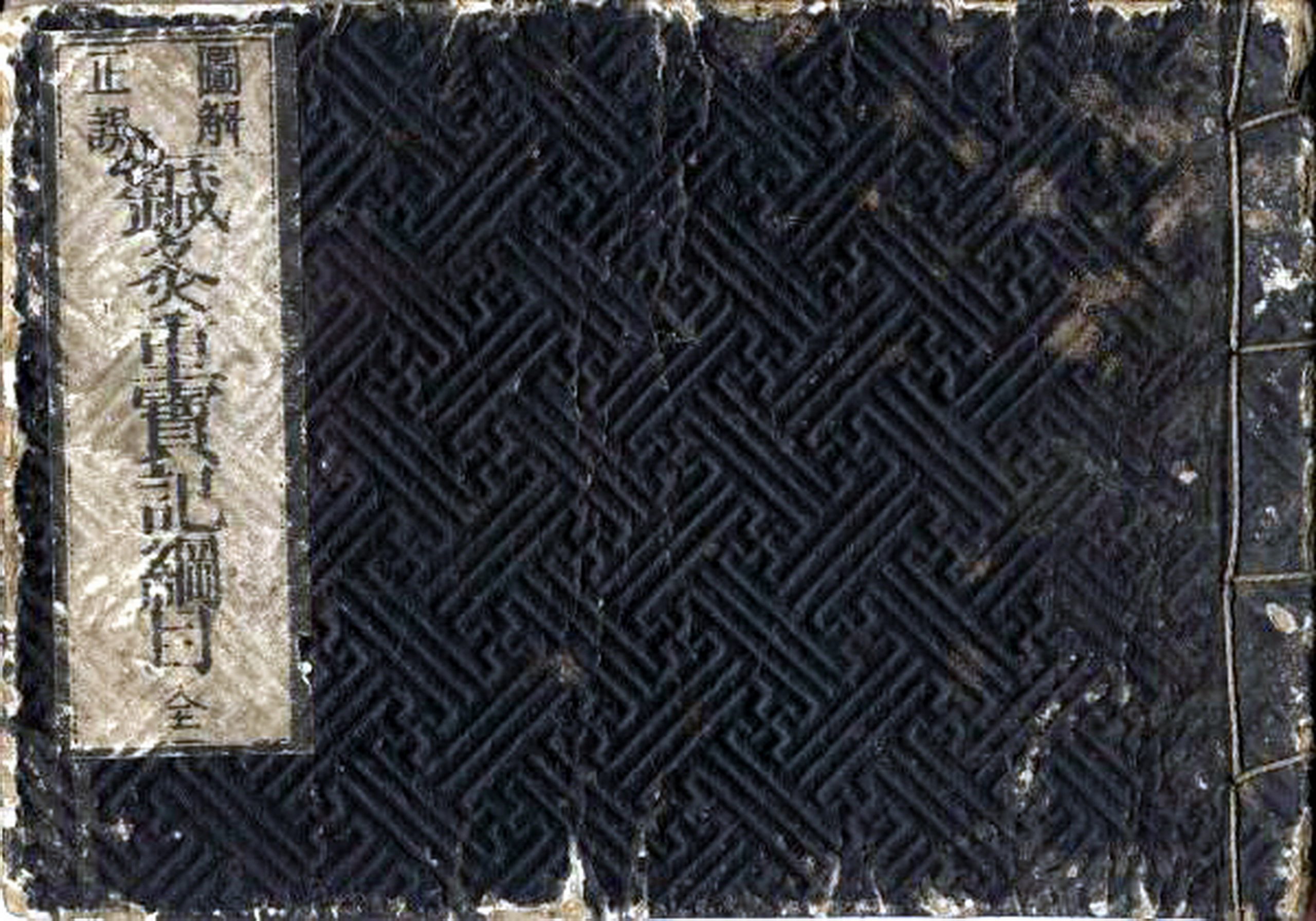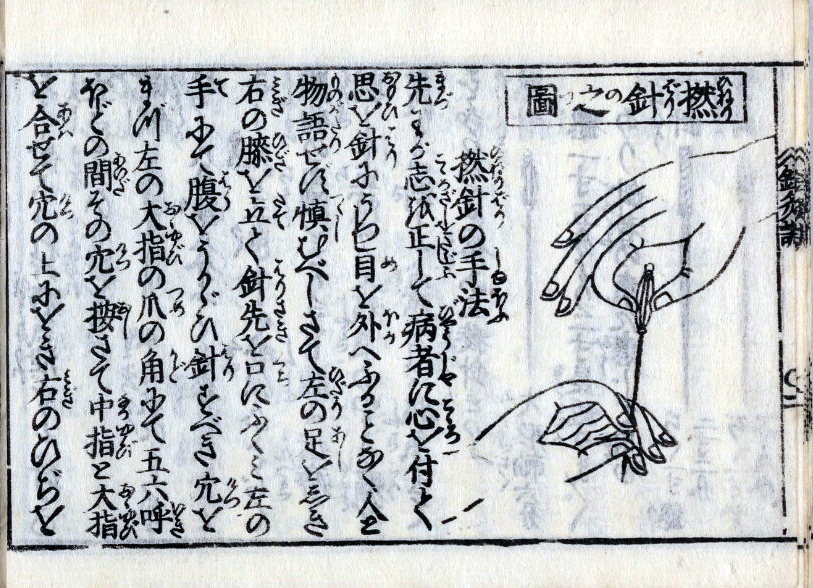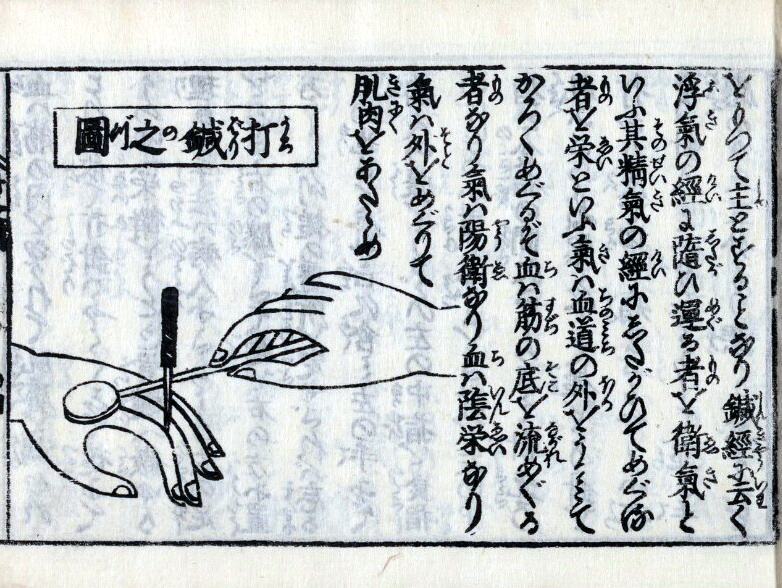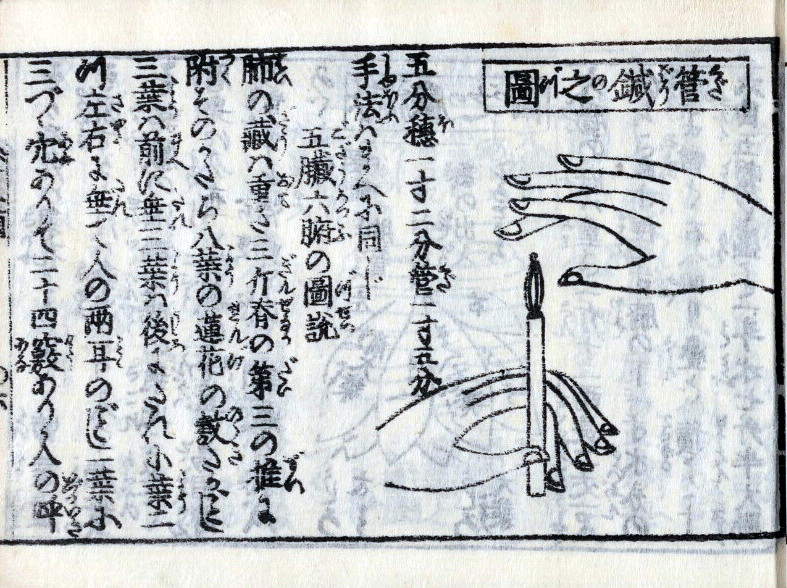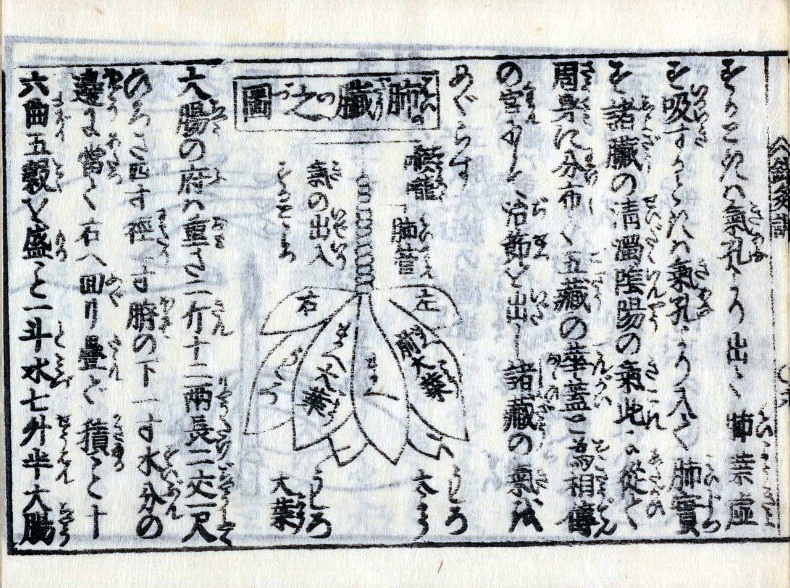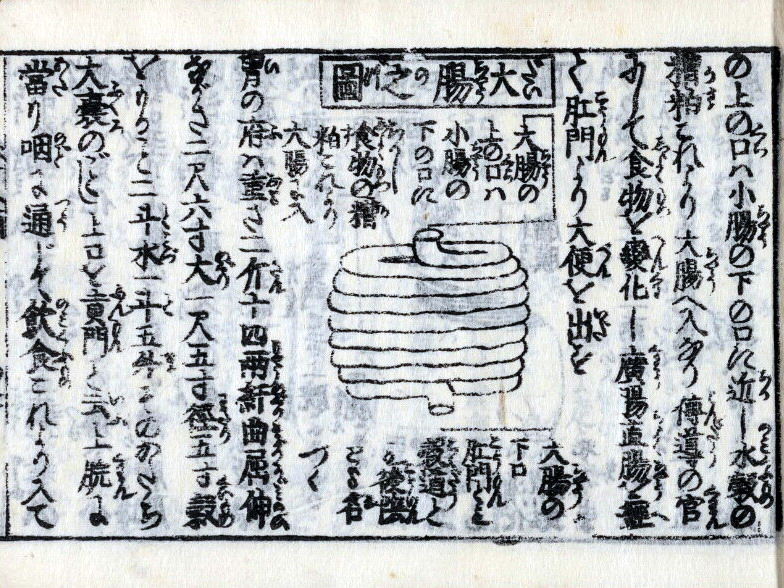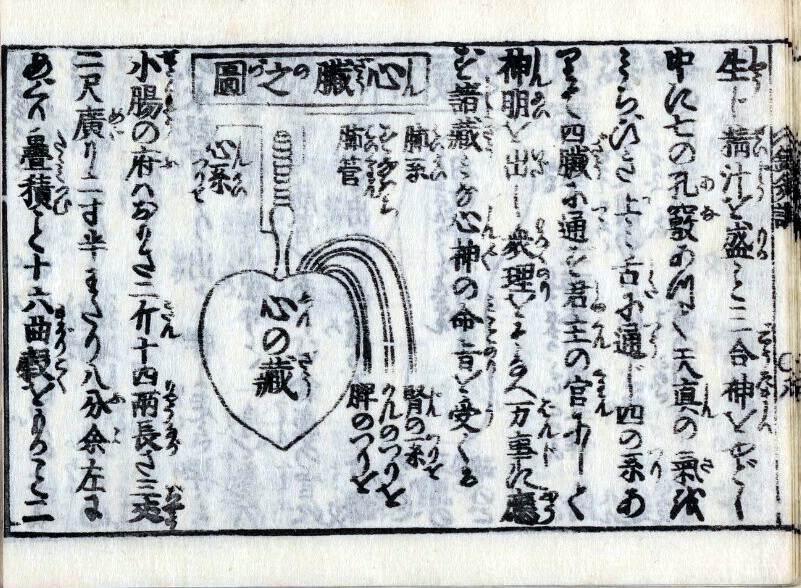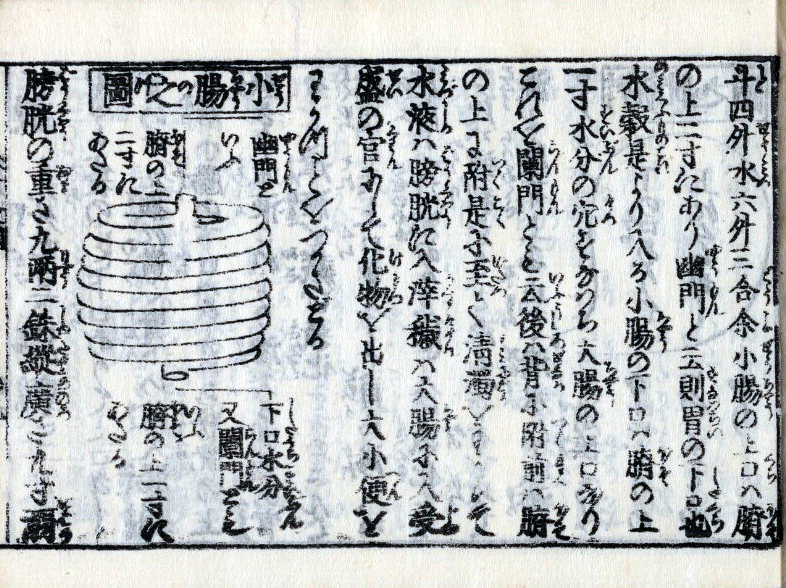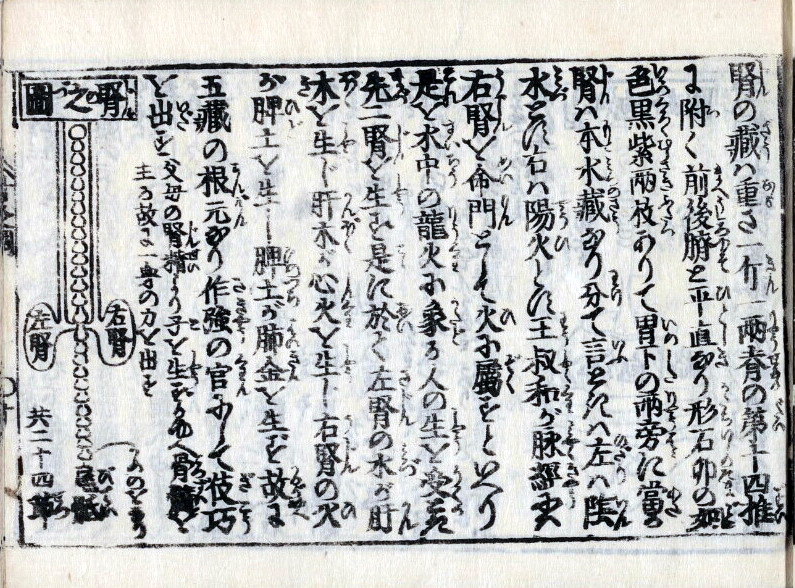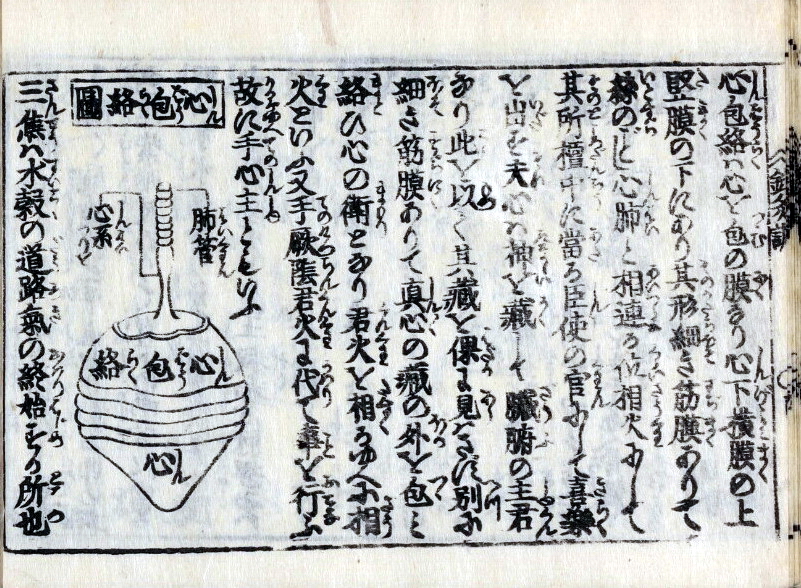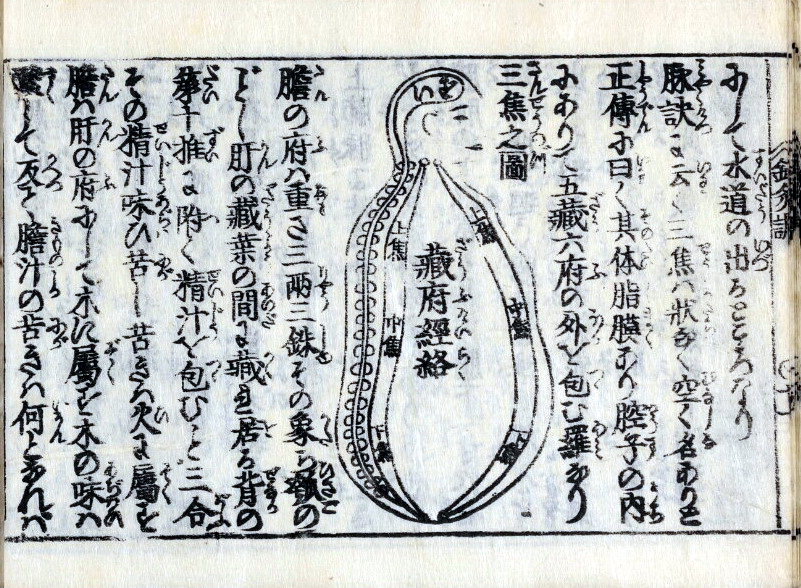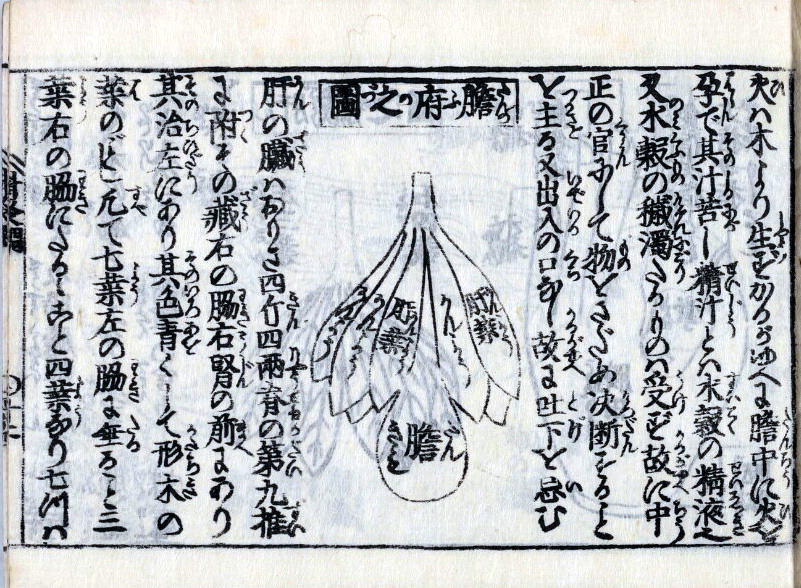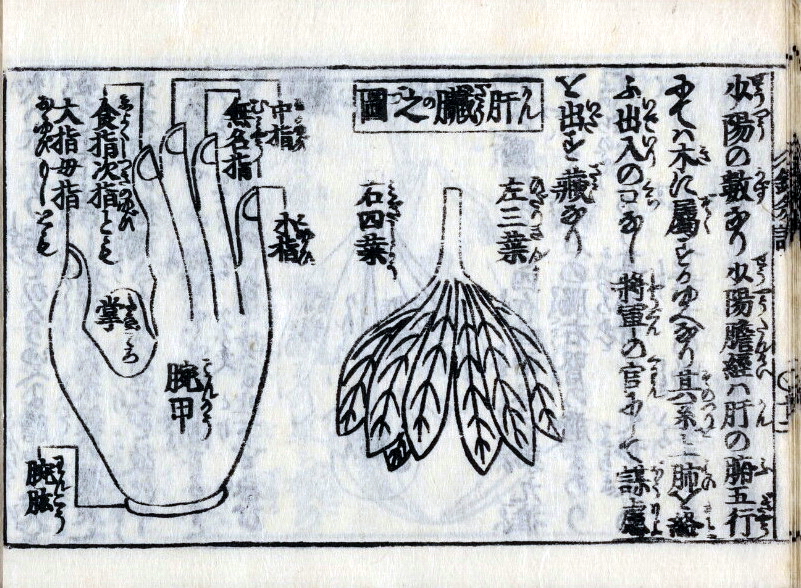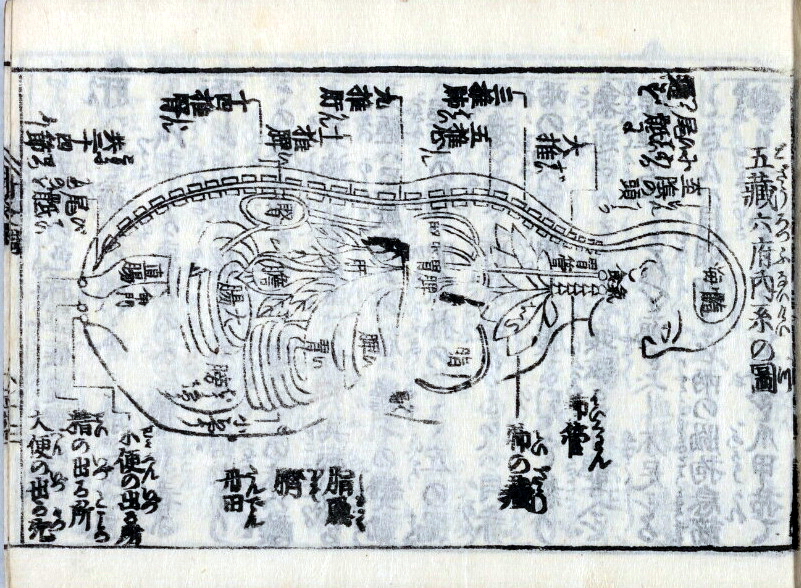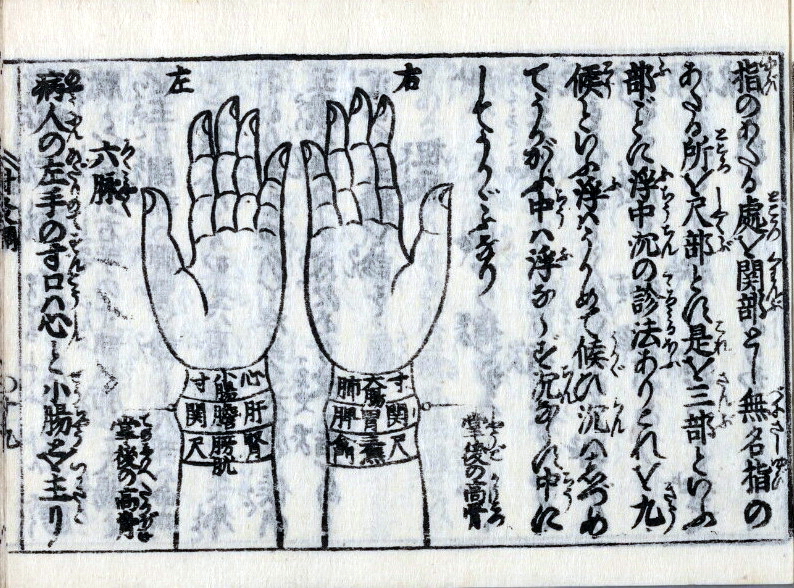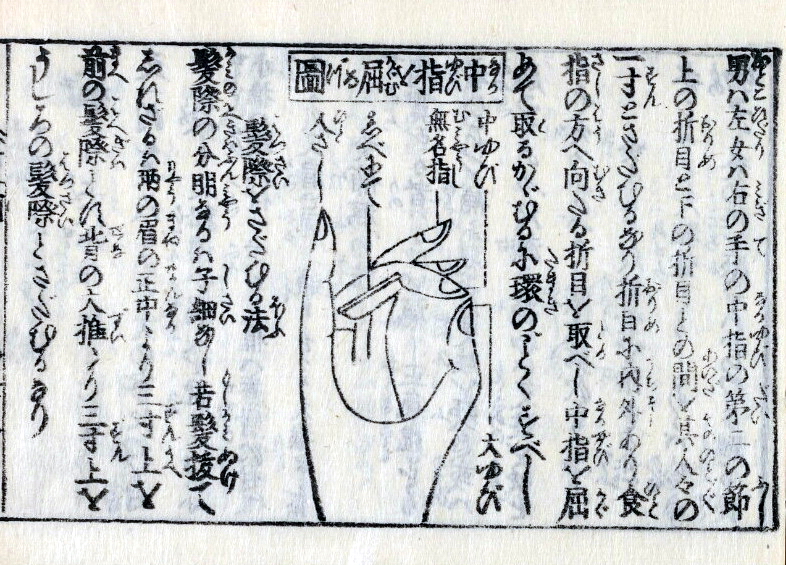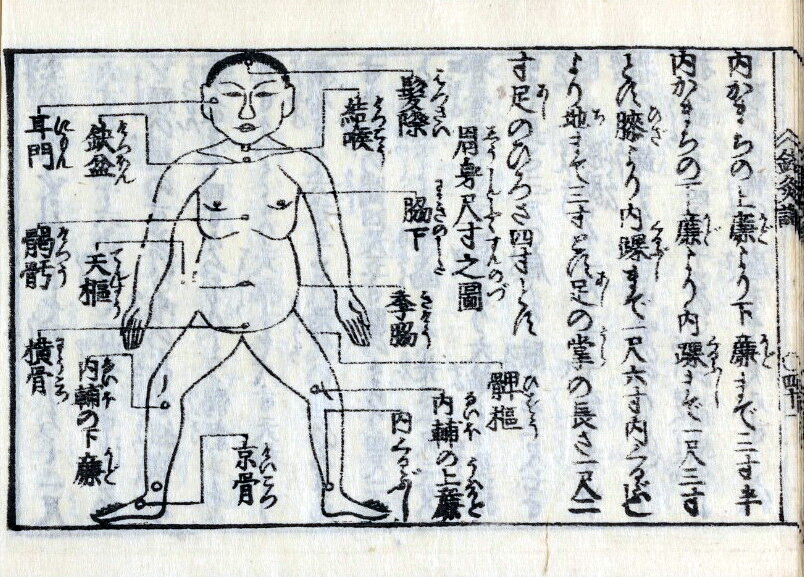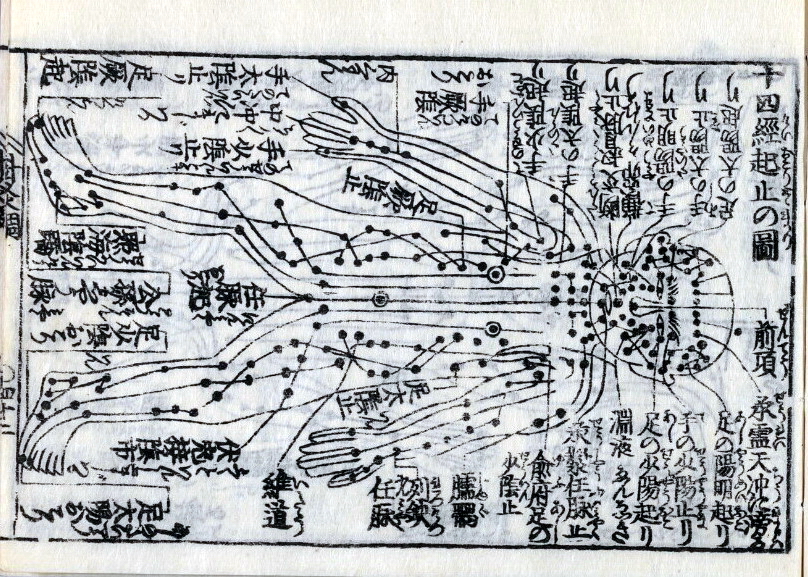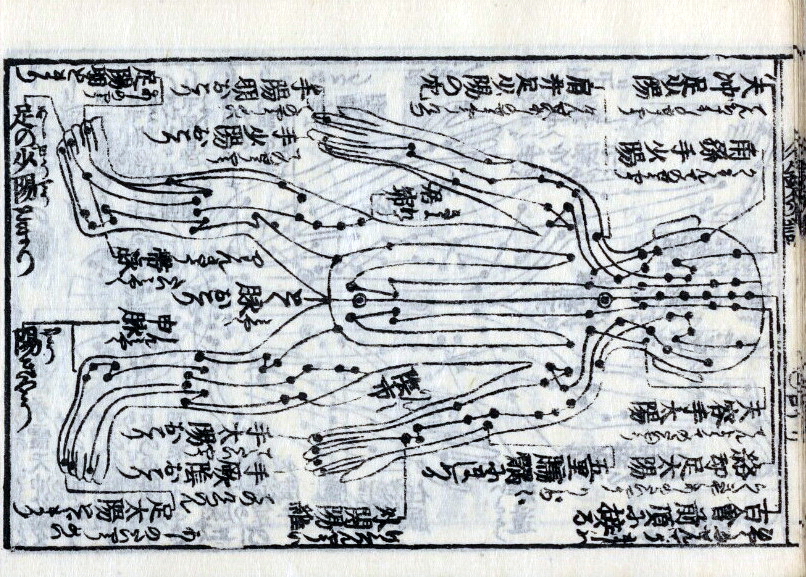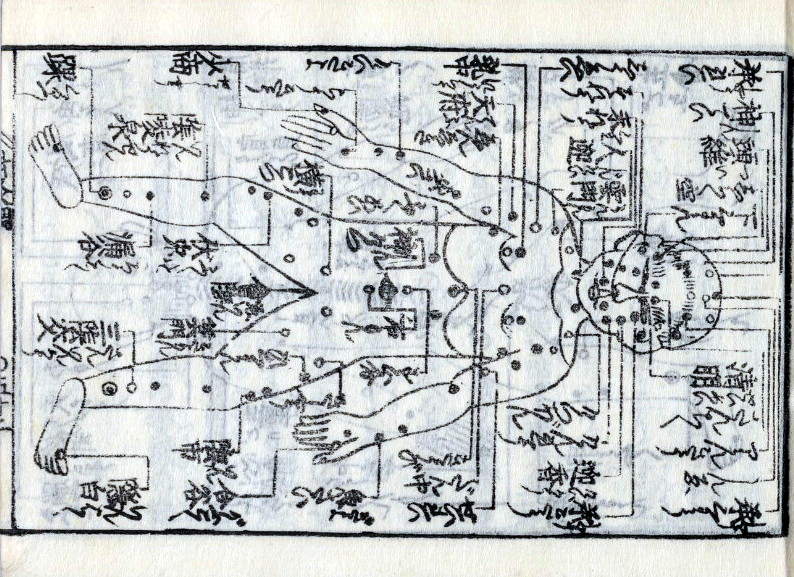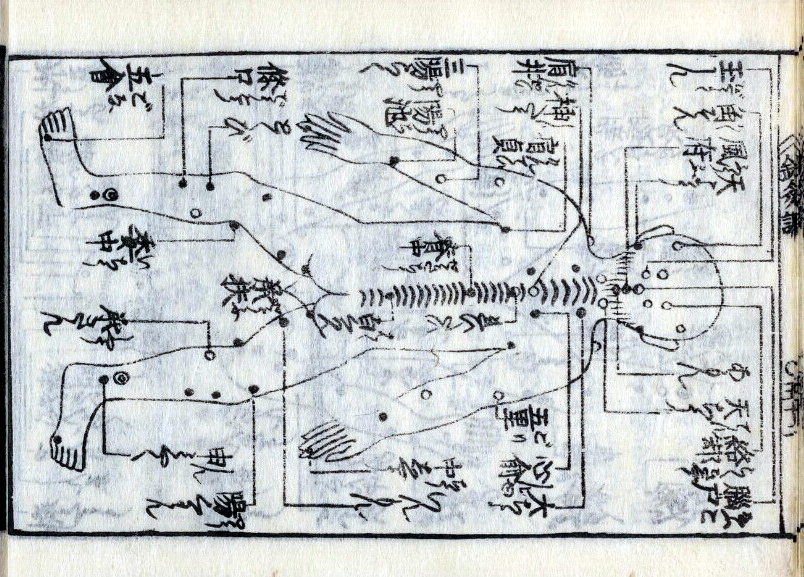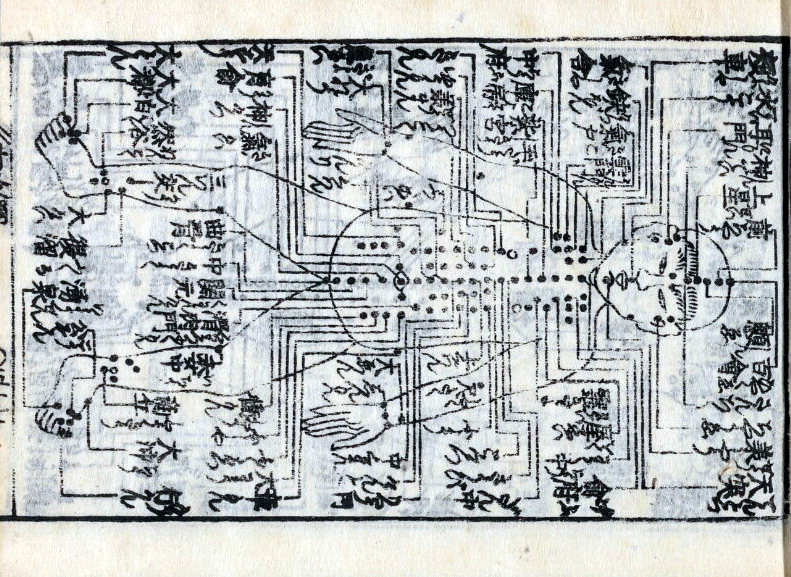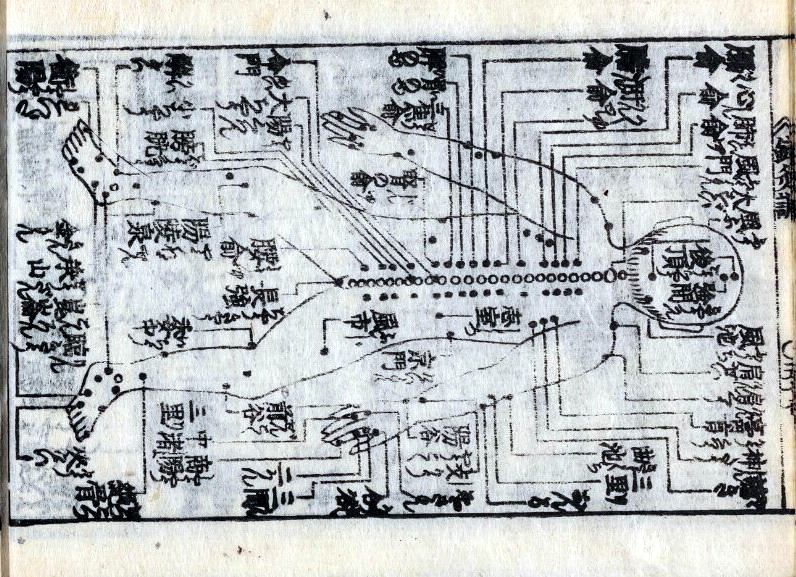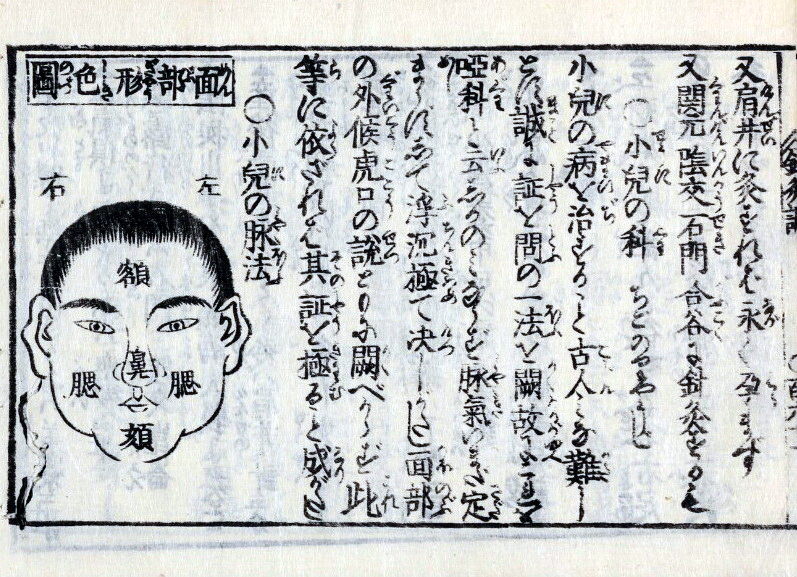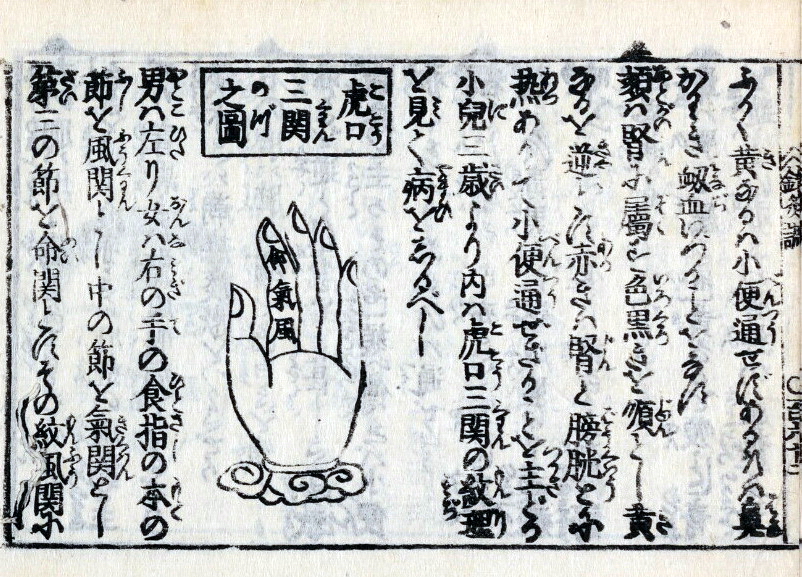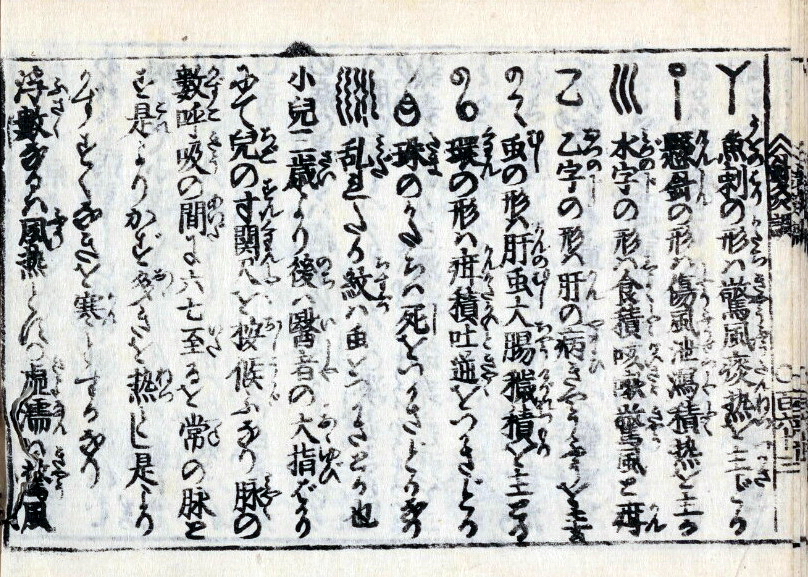鍼灸重寶記綱目
Shinkyū Chōhōki Kōmoku
(Acupuncture and Moxibuistion Heavy Treasure Record Outline)
I would like to share a very important excerpt from the manuscript Shinkyū Chōhōki Kōmoku 鍼灸重寶記綱目 written by Hongō Masatoyo 本郷正豊 in 1749. This text explains a big picture on how Japanese medicine: acupuncture, bodywork massage, self-exercise, and other treatments progress to cure disease.
SECRETS INTO WHICH OUR SCHOOL HAS BEEN INITIATED
At first, for every disease, hit the Tanden with a Hari (acupuncture needle). The Tanden is at a spot two Sun (old unit of length, about 6cm) below the navel. The Tanden is a place to move the Jinki (kidney energy). The Jinki controls vitality, and is the source of the 12 major Kei (organ meridians).
- Hit the Tanden with a Hari at first, and then apply the technique of Sanshin (a technique of Hari to scatter Ki) to move Genki (one of the types of Ki in humans and is brought by Jin). At this time, do not concern yourself in the Keiketsu (acupuncture points that are on the meridians).
- Hit with a Hari only spots where Jaki (bad energy) stays to open a way of Genki, and the Genki will go along this way and the Ki will begin to move.
- If the Ki moves, Tan (phlegm, too much body fluid, or energy of water) moves according to it.
- If the Tan moves, Netsu (too much body heat, energy of fire) goes away.
- If the Netsu scatters, Fu (energy of wind) passes away in the physical inside.
- In addition, if Ki moves, Ketsu (blood circulation) is activated.
- If the Ketsu is activated, moisture occurs.
- If the moisture occurs, Sei (vitality, energy, spiritual strength, or power to constitute the body) increases.
- When the Sei increases, strong Shin (spirit, mind, or power to control life activity) is born in a person.
- This is an effect of Hari, Anma Doin, and other treatments.
